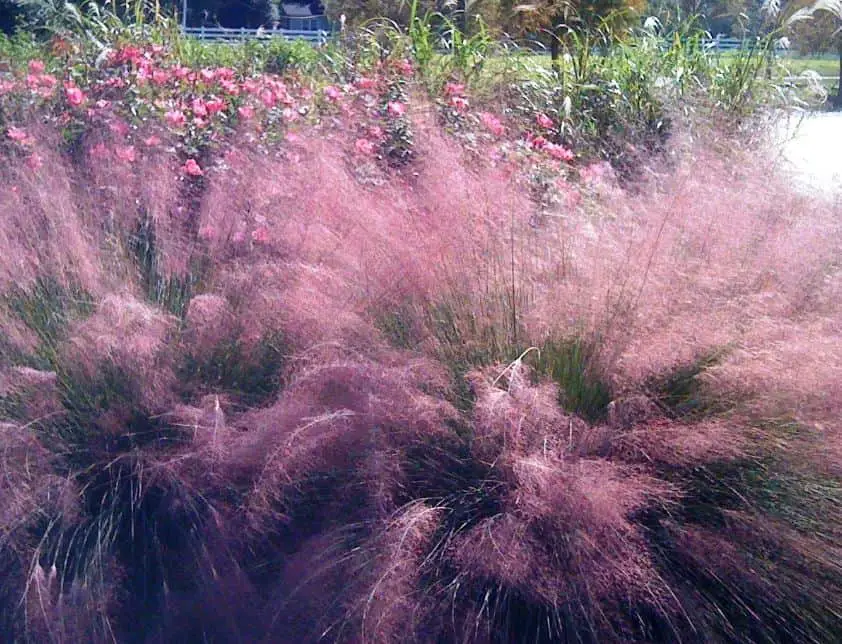The southeast states need ornamental grasses that can survive hot summer temperatures. Pick a species and variety that thrives in your area’s soil, sunlight, and moisture levels to enjoy these lovely plants. Although these ornamental grasses are listed by state, there is a lot of overlap, and most of them will thrive throughout the Southeast.

Ornamental Grasses – Florida
- Beach panic grass: Try planting this kind of panic grass in your garden’s sandy coastal locations. It is a clumping grass that needs full light and doesn’t go much higher than 2 feet (61 cm). It can tolerate salt quite well.
- Palm grass: Palm grass is permanent in Florida and gives the garden a tropical look. The broad, pleated leaves seem like little palms. Cylindrical, green flower spikes. This grass may reach a height of 10 feet (3 meters).
- Fakahatchee grass: Also known as gamma grass, it is a natural grass that is simple to cultivate and can withstand partial shade and drought. The blooms are fascinating. On slender stalks, they rise above the leaves.
Ornamental Grasses – Georgia
- Panic grass: Both beaked and redtop grass are native to Georgia and grow from 2 to 4 feet (61 cm to 1 m) tall. These can tolerate dry soil and are suitable for wet soil areas near swamps or streams.
- Upland river oats: This grass, which is also natural, has lovely blooms on curving stems that complement dried arrangements well. The soil needs to be rich and wet. River oats in the uplands easily reproduce.
- Eastern bottlebrush: This grass can grow in some shade and is good for field gardening and places where the soil is moist but drains well. Bottlebrush is distinguished by its bunches of prickly flowers.
- Blackseed speargrass: Choose this natural grass for dry places and rocky soil. It grows in 3-foot (91 cm) tall clusters, with black seeds that seem to float above the leaves.
Ornamental Grasses – South Carolina
- Big bluestem: This plant is native to most of the United States and thrives across the Southeast. It grows in tight clusters up to 8 feet (2 meters) tall and turns a lovely scarlet color in the autumn. One kind has leaves that are a pale blue color, while another has red streaks on them.
- Fountain grass: This beautiful grass is recognized for its elegant design and bottlebrush blooms that vary from cream to light pink. Smaller sizes and many colors of fountain grass species are available.
- Japanese forest grass: This grass forms gently cascading, thick mounds. It barely reaches a height of around 1.5 feet (46 cm). Japanese forest grass comes in variants with stripes and variegation, providing a wonderful ground cover for shaded regions.
Ornamental Grasses – North Carolina
- Muhly grass: For arid areas of the garden, choose Muhlenbergia capillaris. This natural grass comes in a few varieties and is quite drought resistant. For autumn blossoms that are fluffy and rose-colored, choose the pink variety.
- Feather reed grass: During the cold season, feather reed grass grows in clusters up to one meter (1 ft) in height. It tolerates dryness and enjoys direct sunlight. Taller plants and striped or variegated leaves are characteristics of cultivars.
- Appalachian sedge: Although not technically grass, this sedge is native to the state and resembles grass. It forms attractive ground cover in shaded locations and grows in compact bunches.
Ornamental Grasses – Virginia
- Indiangrass: Sorghatrum nutans is a plant that grows naturally in Virginia. Because its flowers and seeds are golden, it is often called “yellow Indian grass.” It has a lovely autumn color and may become up to 8 feet (2 meters) tall.
- Switchgrass: This plant, which may reach a height of 10 feet (3 meters), has lacy, beautiful seed clusters that turn crimson to purple in the autumn. Fall sees the stems acquire a beautiful golden color.
- Tufted hair grass: This natural grass thrives in alpine meadows and loves wet soil and some shade. Tufted hair grass has an intriguing seasonal color shift that begins as a purplish green and fades.
- Sideoats grama: This is the Texas state grass but is also indigenous to Virginia. Its oat-like seeds, which dangle on a tall stalk, gave rise to its name. When in bloom, the flowers are lovely.


